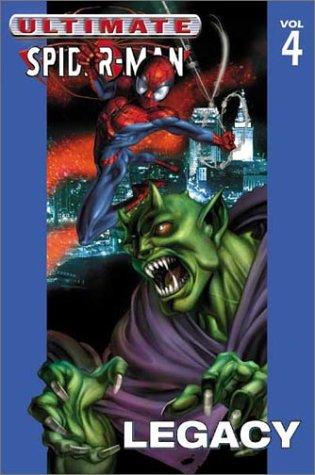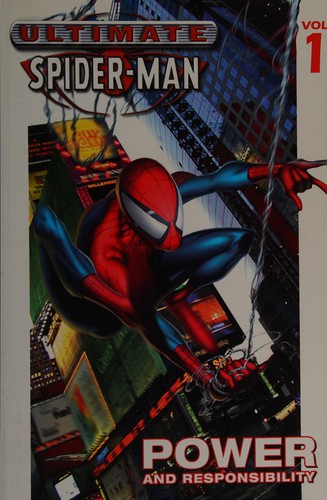Ashwin reviewed The Sense of an Ending by Julian Barnes
Review of 'The Sense of an Ending' on 'Goodreads'
5 stars
This book is exceptional.
My review: daariga.wordpress.com/2014/10/26/the-sense-of-an-ending/
I like to read science fiction, classics, thrillers, history and technology.
This link opens in a pop-up window
This book is exceptional.
My review: daariga.wordpress.com/2014/10/26/the-sense-of-an-ending/
Bad amateurish writing, one dimensional characters and cliched plot (Arabs are the terrorists!). Stay away from this one.
More details in this post:
http://daariga.wordpress.com/2014/07/28/zero-day/

Garon Tsuchiya: Old boy. (2007, Dark Horse Manga)
Imprisoned for a decade without trial or explanation -- and then released just as unceremoniously -- and now warmed with …

Brian Michael Bendis: Ultimate Spider-Man. (2003, Marvel Comics, Marvel)
Spider-Man tries to bring down the head of organized crime.
(Crossposted from my blog: daariga.wordpress.com/2013/10/06/interpreter-of-maladies/)
I like to read a book, uninterrupted, over a period of a day or two. So, it is sad that I rarely get that kind of time these days. Seeing my friends going bonkers over Jhumpa Lahiri’s latest book, The Lowland, I checked out her bibliography. I am not a total stranger to Lahiri. A few years earlier I had gifted her book, The Namesake, to a friend, after having enjoyed its movie adaptation.
I picked up Interpreter of Maladies, her first major work, after seeing that it was a collection of nine short stories. Surely it would be easier to finish each story without disruptions. All of the stories are based on Bengalis in South Asia or Bengali immigrants to USA. And more than half the stories take place in university towns with the protagonists being or related to PhD students, researchers …
(Crossposted from my blog: daariga.wordpress.com/2013/10/06/interpreter-of-maladies/)
I like to read a book, uninterrupted, over a period of a day or two. So, it is sad that I rarely get that kind of time these days. Seeing my friends going bonkers over Jhumpa Lahiri’s latest book, The Lowland, I checked out her bibliography. I am not a total stranger to Lahiri. A few years earlier I had gifted her book, The Namesake, to a friend, after having enjoyed its movie adaptation.
I picked up Interpreter of Maladies, her first major work, after seeing that it was a collection of nine short stories. Surely it would be easier to finish each story without disruptions. All of the stories are based on Bengalis in South Asia or Bengali immigrants to USA. And more than half the stories take place in university towns with the protagonists being or related to PhD students, researchers or professors.
A daily evening powercut helps a couple in a failing marriage to discover new facets of each other in A Temporary Matter. I loved the characters here and the predicaments of a husband in a long-drawn PhD hit home. Bangladesh’s bloody creation and cultural similarities of South Asians are the subject of When Mr. Pirzada Came to Dine. It features a Bengali researcher from Dhaka who is hosted to regular dinners by a Bengali Indian couple at their home at an US university town. Despite their different nationalities, the fate of a country far away binds the daily emotions of these characters.
In Interpreter of Maladies, a part-time car driver’s full-time job as a Gujarati interpreter to a doctor brings him closer to a member of an American-born Indian family visiting Konark. This story is full of filmy little gems, though most are predictable. A Real Durwan is a tale of cruel fate which befalls an old maid in Calcutta working the flats in a decrepit building. The story has all the familiar plot and characters tricks of RK Narayan, but in a Bengali setting. The pathetic life of Boori Ma and the unhappy ending left me melancholic.
A New York woman ends up being a temporary mistress of an Indian investment banker in Sexy. Despite not being able to rely much on Indian culture in this story, Lahiri’s yarn still has a nice bittersweet taste. One of my favorites from the book is Mrs. Sen’s, where an American kid is daily witness to the afternoon chores of his Indian babysitter woman at her home. Lahiri hits it out of the field when bringing an outsider’s prism over the kitchen duties and marital miffs of a traditional Indian woman. The discovery of Christian symbols in their new house starts to drive a wedge between a newly married guy and his wife in This Blessed House. I found the rocky start of a relationship to be genuine and familiar and the scenarios are actually quite funny.
The Treatment of Bibi Haldar is another story with a strong RKN taste. Set in a Bengali town, Bibi ails from an unknown untreatable ailment that burdens those who look after her. Though the setting is sad, the story has many fun moments around her dreams for a happy married life. The Third and Final Continent ends the book with an intersection of a Bengali with his 103-year landlady near MIT. The dreary predicament of the hero in a cold foreign land reminded me strongly of the second act in The Hills of Angheri.
I found the Interpreter of Maladies to be a quick read. It took a day, even though I stopped to savor many a line in the stories. Being short stories, it is also easier to finish each one in a separate setting. Lahiri’s world is strictly restricted to Bengalis and Bengali immigrants and set in a time before cable TV and internet. The settings gets a bit too familiar by the end. it is however her detailed descriptions of Indian kitchen and family life that never gets old. In many of the stories here it is easy to pick out the threads that lead to her later work, The Namesake. Interpreter of Maladies is a box of treats, sweet, spicy and bitter. Try it!

Garon Tsuchiya: Old boy. (2007, Dark Horse Manga)
Goto marches forward relentlessly to discover the identity of his tormentor, the man who had Goto locked up in a …

Brian Michael Bendis: Ultimate Spider-Man. (2002, Marvel Comics)
Spider-Man tries to bring down the head of organized crime.

Spider-Man tries to bring down the head of organized crime.

Garon Tsuchiya: Old boy. (2007, Dark Horse Manga)
"Ten years locked away in a private prison with only a TV set and a jailer's voice for company-but why? …

Garon Tsuchiya: Old boy. (2007, Dark Horse Manga)
"Imprisoned without explanation for a decade, Goto is a free man at last, but what price freedom? Now, his mysterious …

Garon Tsuchiya: Old boy. (2006, Dark Horse)
Imprisoned for a decade without trial or explanation -- and then released just as unceremoniously -- and now warmed with …
My full review is here: daariga.wordpress.com/2013/01/12/the-manga-guide-to-molecular-biology/
The Manga Guide to Molecular Biology is one from the many in the manga series by No Starch Press. For a while now, I have had my eye on these English translations of works by and from Japanese. This particular manga on molecular biology is written and illustrated by Masaharu Takemura. The motivation is to use the story-telling, action-oriented and illustrative powers of the manga to introduce a science that is quite hard to grok.
Though weak and laughable, there is a story and a few principal characters here to support the cause of the manga. Ami and Rin are two students of molecular biology who have not been attending classes regularly. In order to help them, their Professor, named Moro, brings them to his private island where he has a lab. Over the next few days, his assistant Marcus uses the …
My full review is here: daariga.wordpress.com/2013/01/12/the-manga-guide-to-molecular-biology/
The Manga Guide to Molecular Biology is one from the many in the manga series by No Starch Press. For a while now, I have had my eye on these English translations of works by and from Japanese. This particular manga on molecular biology is written and illustrated by Masaharu Takemura. The motivation is to use the story-telling, action-oriented and illustrative powers of the manga to introduce a science that is quite hard to grok.
Though weak and laughable, there is a story and a few principal characters here to support the cause of the manga. Ami and Rin are two students of molecular biology who have not been attending classes regularly. In order to help them, their Professor, named Moro, brings them to his private island where he has a lab. Over the next few days, his assistant Marcus uses the virtual reality machine in their lab to help these two students understand this science.
There are 5 important entities of molecular biology that the manga sets out to explain: cell, protein, DNA, RNA and gene. These entities are present in every cell of our body and are constantly in action. In every being on this planet, cells are working hard producing a myriad of proteins and are reproducing all the time. By literally taking the students (and the reader) on a trip inside the human cell, employing the virtual reality machine, the manga quite successfully brings the world of a cell to life.
I liked this manga maybe due to the fact that I did not study biology after class 10. There are a few compelling reasons why I think this manga was really good. The author has a real intuitive understanding of the science. Cells are not static, but are composed of molecules moving around and accomplishing work. The reader gets to view this action, both at the atomic-molecular level and the cellular level. Almost all textbooks restrict themselves to boring 2D figures. In this manga, we get to see how everything is organized and working in 3D. And finally, all of this content is nicely organized so that the reader is gently taken to complex concepts like DNA replication, DNA-RNA transcription and RNA-protein translation.
You might be wondering that you already know many of these concepts. So, why pick this manga? I thought so too. Here are a few tit-bits to titillate you. The cell has a cell wall. If it is a wall, how do proteins and other molecules move in and out of cells? DNA is a double-helix string. If you peek into the nucleus of a cell, will you see DNA strings floating in goo like seaweeds in water? The answer is no! Chromosomes are typically drawn as X-shaped entities. Why? During cell division, DNA replicates by making a copy of itself. If you were to zoom down to the DNA-level during replication, what would you actually see in action in front of your eyes? What is the factory-robot-like molecular machinery that is holding a DNA string, like a person holding a beaded string and methodically copying over every bead (alphabet) over to a new string? The answers to this and more will literally blow your mind!
Manga is typically read very fast. I have seen manga readers on Tokyo trains flipping a page per second. Here though, every page takes time for the mind to visualize and to imagine how the machinery moves and interacts in 3D. This manga of ~256 pages took me 2 days to read. I must also warn that the drawings, while sufficient, are not as fantastic as what is in popular manga series. Given that Takemura is a lecturer, I think this is easily forgiveable.
In conclusion, the concepts in this manga might be rudimentary for a person knowing molecular biology. But for me, it was so revealing that I had to, yet again, question the origin, the why and how of life itself. Inside every cell on this planet, is an incredibly complex molecular machinery whose working is nothing short of amazing. Pick up the manga and dive into this tiny cosmos!

When timid student Peter Parker is bitten by a radioactive spider, he is transformed into super hero Spider-Man.